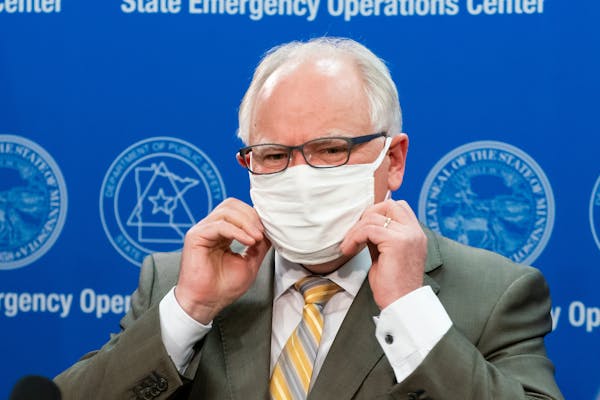Managers at Allina Health are looking to save more money through painful workforce changes, as the Minneapolis-based health care system responds to the effects of successfully delaying the predicted surge of COVID-19 patients in the state.
The 11-hospital health system, which runs a network of medical clinics around the Twin Cities, has already told 10,500 workers in lower-volume service lines to take furlough hours.
On Monday, Allina executives told staff that additional staffing changes are likely in coming weeks, along with reductions in some benefits and the elimination of merit raises for non-contract staff.
"Given the losses we are looking at, we need to go deeper and do more than what was done in that first phase," Christine Moore, Allina's chief human resources officer, said Monday. "This is a situation that none of us wants to be in. ... As soon as we can get people back to work, we are very eager to do that."
Like health care providers across the state, Allina has seen its revenue crater in the run-up to the predicted peak of patients with COVID-19 this summer. Allina said it has seen a dramatic drop in inpatient visits, surgeries, emergency department cases and office visits.
The Minnesota Hospital Association has said Minnesota hospitals are collectively projecting a $2.9 billion loss over the next three months, despite some increased revenue from treating COVID-19 cases.
Gov. Tim Walz's executive order in March to delay nonessential and elective procedures has led to a paradox: Health care providers are trimming staff while simultaneously ramping up operations in anticipation of coronavirus cases.
Last week, nurses at Children's Minnesota health system voted overwhelmingly to ratify a negotiated agreement to furlough the equivalent of 181 full-time nurses.
Bloomington-based HealthPartners, which runs hospitals and a large insurer, is furloughing at least 2,600 workers, and Rochester-based Mayo Clinic is furloughing about 30,000 people.
About 10% of the 584,000 applications for unemployment insurance filed in Minnesota between mid-March and late April were from health care workers.
Walz on Tuesday ordered that hospitals, surgery centers and clinics could resume elective procedures next week if they put social distancing plans in place to protect workers and patients. But it's unclear what procedures and procedural volumes will be allowed.
At Allina, Moore said managers will be watching to see how patient volumes recover under the new order. But given that the health system's financial losses continued in April at the same pace as in March, the health system can't afford to delay spending cuts.
"As we are able to bring back elective or previously scheduled surgeries, we will be able to call people off furloughs," Moore said.
The new workforce changes begin May 11, but the memo went out Monday to give managers time to prepare. The workforce changes will center on service lines with lower volumes, and will include long-term furloughs, temporary reductions in the number of full-time equivalent positions, or layoffs in areas where volumes are not expected to return.
In addition, merit-pay increases for non-contract staff will be eliminated through April 2021, 401(k) matching contributions will be cut for many staff through 2020, and benefits like tuition reimbursement and continuing medical education allowance are suspended for the rest of the year.
Joe Carlson • 612-673-477
Reporter Chris Snowbeck contributed to this report.

Want to share info with the Star Tribune? How to do it securely

'Safe recovery sites' would offer syringes, naloxone and more to people using drugs. The plan could be in peril.
New Minnesota GOP leaders seek peace with party's anti-establishment wing

Who is Republican Lisa Demuth, Minnesota's first House speaker of color?

